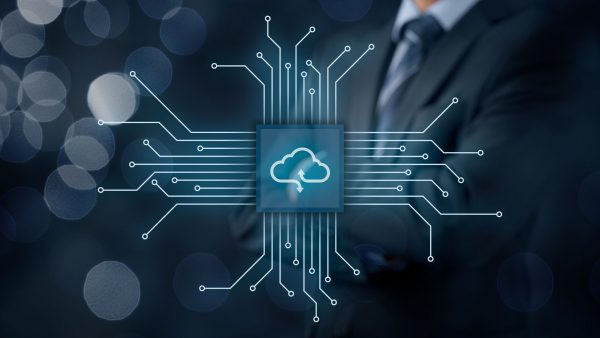Taking off into the future: Application modernization in the cloud
Migrating your servers and workloads to the cloud using the ‘Lift&Shift’ method is an excellent way to quickly move to the Cloud environment. While the initial switch offers several advantages such as improved scalability, innovativeness, resiliency and cost savings, it is the improvements to your application and development processes that can offer even more benefits.
This article explores the various aspects of application modernization as a crucial step in driving growth and innovation in our workloads. By diving into the details of this process, we will discover how application modernization can serve as a fundamental driver to evolve and empower our operations in an ever-changing technology environment. To do so, we will follow a formula that answers the main questions that everyone asks when starting a transformation journey.

What is cloud application modernization?
Cloud application modernization goes beyond simply migrating our existing workloads to a new environment. From a business standpoint, this strategy enables organizations to optimize their operations, improve agility in service and product delivery, as well as reduce long-term operational costs. By adopting cloud application modernization, companies can implement or develop business models, respond more quickly to market demands and deliver a better experience to their customers. This is achieved by upgrading and leveraging the latest technologies, enabling them to stay ahead in a highly competitive business environment.

Who benefits from application modernization in the cloud?
Application modernization in the cloud benefits various stakeholders within an organization. Technology teams find it easier to maintain and update applications, leveraging modern development environments. In addition, agreements with partners and public cloud providers offer opportunities for enhanced collaboration and access to cutting-edge technologies. This synergy enables the implementation of agile practices and continuous delivery methods, thus streamlining the application development and deployment cycle, which translates into an improved user experience and a greater ability for the company to adapt to changing market demands.
Modernizing applications in the cloud offers a number of benefits to different stakeholders within an organization and to the enterprise as a whole:
- To the companies and organizations themselves: they gain significant improvement in operational efficiency by optimizing their processes and systems, leading to long-term cost reductions. In addition, it allows them to scale more easily, adapt quickly to market demands and remain competitive.
- To end users and customers: they experience more agile, stable and better performing applications. Cloud modernization often leads to more intuitive interfaces and an improved user experience, which translates into greater customer satisfaction and loyalty.
In summary, modernizing cloud applications not only benefits technology and development teams but also positively impacts the end customer experience and the overall company strategy. It enhances operational efficiency and competitiveness in the market.

When is it necessary to modernize cloud applications?
The need to modernize cloud applications can arise for various reasons and situations within an organization:
- Technological Obsolescence: when existing applications use outdated technologies that are no longer supported, or limit their ability to scale or integrate with other, more modern solutions.
- Limited Scalability: legacy applications may have difficulty handling sudden increases in workload or adapting to changes in demand, affecting their performance and efficiency.
- Operational Inefficiencies: if current applications require extensive manual processes or are unable to take advantage of the automation and efficiency provided by modern technologies, they may need to be modernized to improve productivity.
- Adaptation to New Business Demands: changes in business needs, such as expansion into new markets, introduction of new products or services, may require more flexible and adaptable applications.
- High maintenance costs: if the cost of maintaining and upgrading existing applications is too high, modernization may offer a more cost-effective alternative in the long term.

What are the main challenges for application modernization?
The challenges inherent in modernizing cloud applications fall into several key areas:
- The first challenge is the refactoring of monolithic applications, which are often complex and difficult to decompose due to their tight coupling and legacy code.
- Second is the lack of skills in developers to adopt technologies such as microservices, containerization and DevOps in application modernization.
- The third challenge lies in organizational silos, which limit collaboration and communication between teams, slowing down modernization.
- The fourth risk is paralysis by analysis, which presents another challenge. Overthinking and excessive deliberation can slow down decision-making processes and hinder the agility of modernization efforts.
Finally, the complex management of modernization initiatives, which involves the coordination of multiple teams with divergent priorities and the need to align business results with modernization objectives.

How is application modernization implemented in the cloud?
There are several approaches to perform a transformation and update of applications and software workloads. In this case we are going to base ourselves on the AWS proposal: The ModAx modernization process. The source that feeds this methodology is called: Experience-Based Acceleration (EBA) and is a practical and agile approach to achieve specific objectives in the cloud. It is conducted from hands-on workshops aimed at addressing friction points and roadblocks in an organization’s cloud journey. It is also the basis for the Migration, FinOps and Platform approaches.
The ModAx methodology is composed of two main phases: ‘Assess and Architect’ and ‘Build and Deploy’ and a third one for escalation:
- The ‘Assess and Architect’ phase, starts with a Modernization Assessment Workshop to assess the readiness of the organization. This workshop aligns stakeholders from different teams and selects 2-3 candidate applications for modernization.
The target state architecture and services involved are clearly defined and documented, laying the groundwork for the next phase. - The ‘Build and Implement’ phase involves detailed planning to deliver the Minimum Viable Product (MVP) features for the selected applications. Managers collaborate with solution architects or AWS partners to identify tasks, pending activities and dependencies. Regular meetings are held to track progress and resolve issues. Teams are trained in the necessary skills through immersion days on the different technologies that are candidates for hosting the modernized applications. This stage culminates in a final sprint session, where multidisciplinary teams work to create and deploy functional MVPs close to the business needs.

What are the different approaches available for modernizing applications?
A common belief is to think that modernizing an application involves a deep refactoring that is almost like starting from scratch. Fortunately, there are several approaches that allow workloads to be modernized without the need to redo much of the work.
While the option of a complete refactoring can be beneficial in many cases, it is not always the only or the most restrictive path. Alternative approaches to modernization can be described as follows:
- Transition to Cloud Native: This approach focuses on decomposing monoliths into microservices to achieve an agile and scalable architecture.
- Container Migration: Focuses on containerizing existing applications or migrating workloads to managed container services such as Amazon ECS or Amazon EKS.
- Modernization with Managed Databases: AWS offers database solutions, most notably Amazon RDS, to facilitate modernization of existing databases.
- Open Source Adoption: Focused on moving .NET workloads to open source environments, leveraging AWS scalable infrastructure and managed services.
- Transition to Modern Analytics: This approach helps customers with data lake, warehouse, and real-time data processing initiatives using Analytics on AWS.
- Modern DevOps Implementation: Enables integration of modern DevOps practices and automated operations to accelerate application delivery using AWS developer tools, optimizing the journey to digital transformation.
Cloud application modernization is not only an opportunity to upgrade outdated technologies, but also to unlock the full potential of your business. Adopting innovative approaches not only improves operational efficiency, but also opens the door to agility, scalability and continuous innovation. Through application modernization, you will be able to deliver exceptional experiences to your users, be more competitive in an ever-changing marketplace and, most importantly, be prepared to face the challenges of the future with confidence and flexibility.



